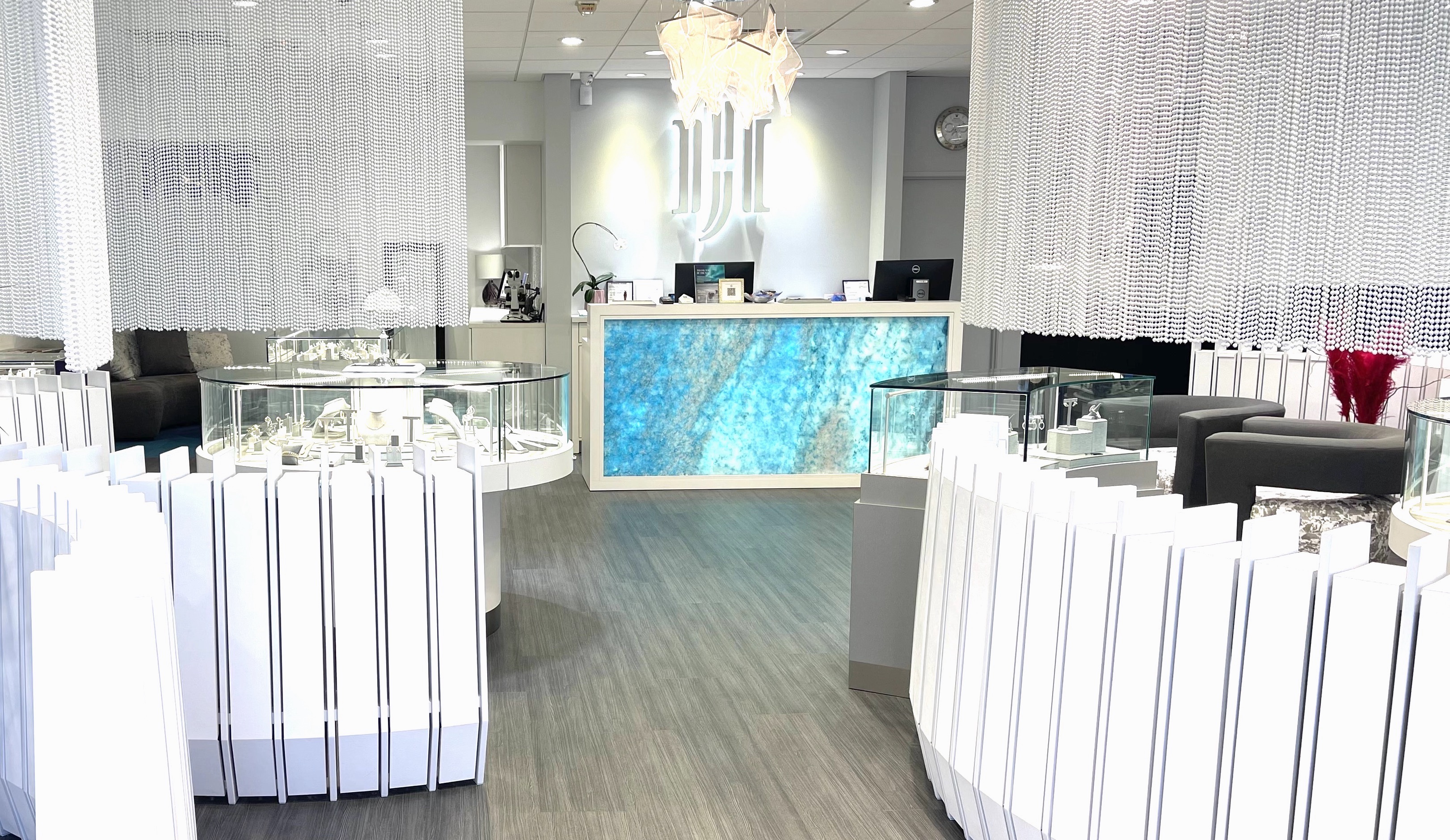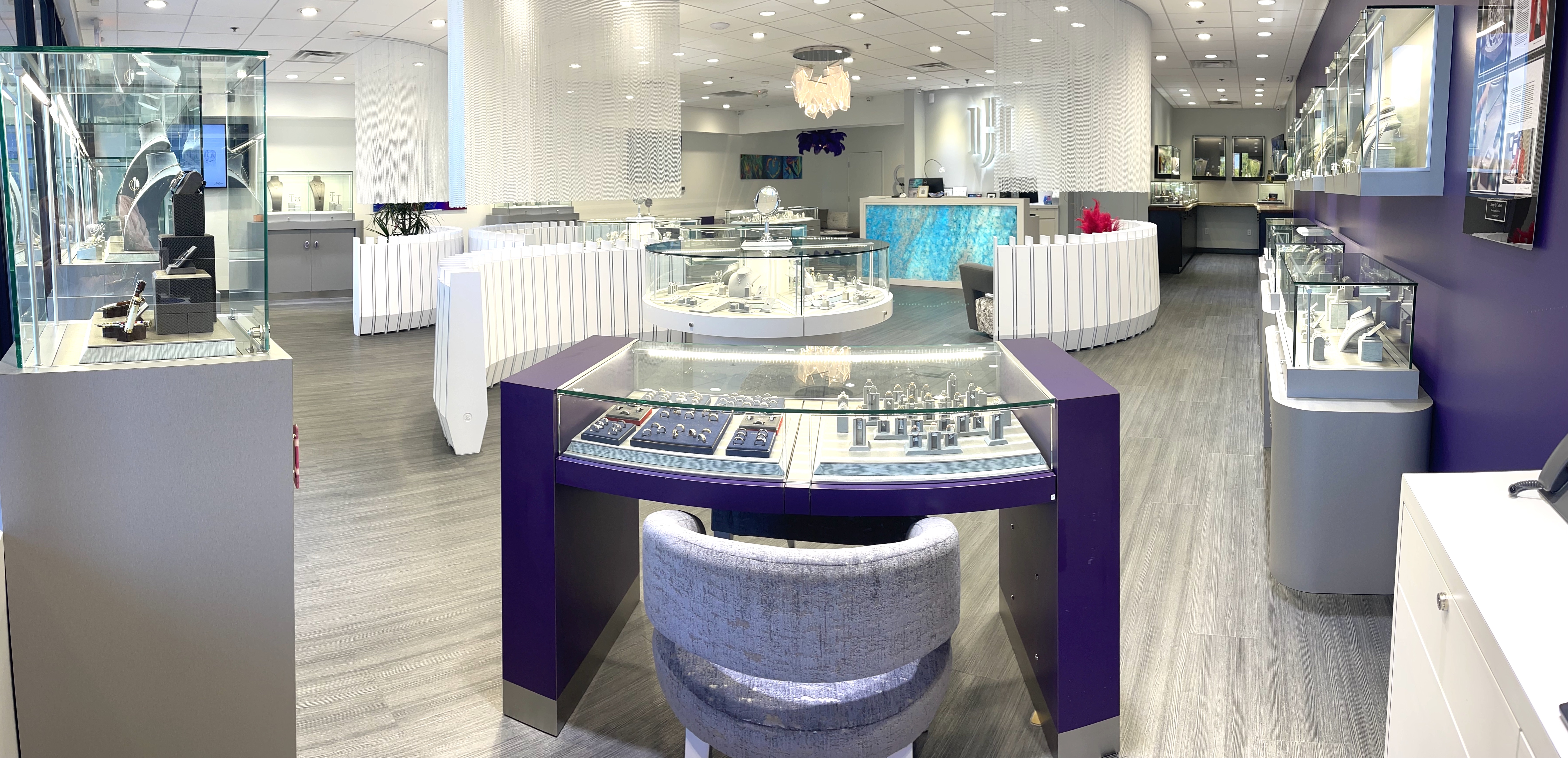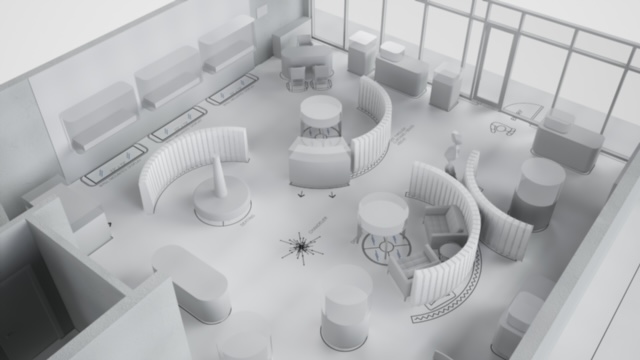Articles and News
The Future of Retail Design is Side-by-Side Selling September 11, 2023 (0 comments)

West Bloomfield, MI--Remember at the end of the day, jewelry stores are competing with an online digital world. As a jewelry owner, you must make your store more about the customer experience, and the customer relationship, and uniqueness for the customers. The “side-by-side selling” technique is where jewelry store design is moving.
The new jewelry store space plan is the dream that has become a reality for Jenny Calleri the owner of Huntington Jewelers in Nevada. Jenny’s entire space plan is side-by-side selling in her store.
When I start new interior design projects this past year, many of my clients ask what jewelry cases give a selling advantage and save space. This was a big decision for Huntington Jewelers, and I often recommend side-by-side jewelry case design, since it gives many advantages.
For example, side-by-side jewelry cases allow the salesperson and customers to interact more comfortably and casually, compared to traditional behind-the-counter selling method. The biggest difference between traditional jewelry cases and side-by-side case designs is selling behind the jewelry cases, which provides a barrier between the client and the jeweler. Side-by-side cases allow both parties to establish trust and agreement with a mutual goal to buy jewelry. See the picture of Huntington Jewelers of the side-by-side jewelry cases, which I designed.

The use of side-by-side jewelry cases can create a sense of comfort with your customers, which can lead to more sales which my clients have expressed to me. See the picture of Huntington Jewelers side-by-side jewelry cases that provide the advantage of increased openness because the buyer and seller stand close to each other. Leslie McGwire & Associates Interior Design Company designed the new store of Huntington Jewelers in Las Vegas, Nevada with all side-by-side jewelry cases from “Concept to Completion.”

Another advantage to side-by-side cases is they can save you space in your store. Using side-by-side cases can save your store three additional feet when they are up against the wall. According to the standard American Disability Act (ADA), a traditional jewelry space plan requires three feet behind the case so the staff can stand behind it.
Therefore, jewelry store owners need to remember that today’s customer is an experience seeker. They crave interaction, stimulation and comfort all at the same time. They may want some entertainment with great deal of time shopping; a bit of soft music accompanying that must-have purchase. But owners also know that customers sometimes want a breather; a quiet minute to “get away” from the buzz, maybe recharge her phone and simply ponder the shopping experience. Many stores are incorporating drink bars, extra seating and side-by-selling cabinetry into their floor plans. These quiet, “non-shopping” moments are experiences, too, and smart jewelry owners would do well to incorporate them into their store offering. See the picture of Huntington Jewelers 3-D rendering, which was done in the design stage so the Jenny Calleri could visualize their new store.
About the Author: Leslie McGwire™ has over 35 years in business development, interior design, equipment, furniture sales and marketing services in retail and jewelry-based businesses. Leslie has won 25 national design awards, including the prestigious Salon Today and INSTORE Jewelry Store awards. Leslie has a true passion for business, design for the jewelry and retail industries. Visit lesliemcgwire.com for more information.








